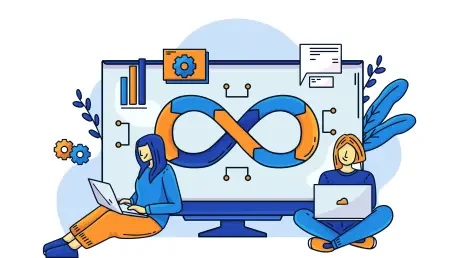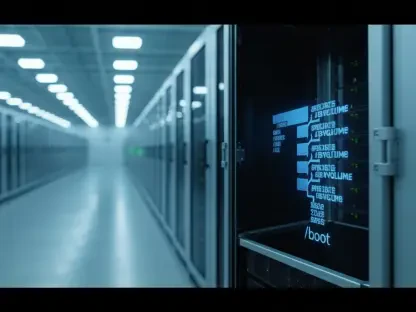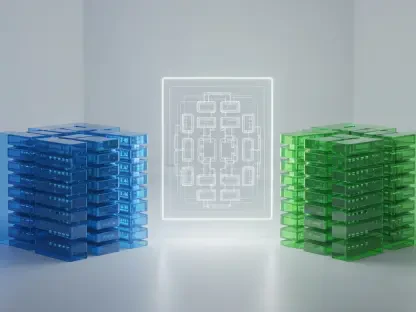In today’s rapidly evolving digital landscape, integrating threat modeling within DevSecOps frameworks has emerged as a critical necessity. As organizations strive to digitize their operations and accelerate software development, the importance of effective security measures cannot be overstated. The increasing prevalence of cyber threats amid swift development cycles has underscored the need for comprehensive threat assessments, making threat modeling not just a strategic advantage but a vital component for modern enterprises that aim to enhance their cybersecurity posture and safeguard their digital assets.
Market Momentum and Adoption
Growth in DevSecOps Practices
The DevSecOps market has experienced remarkable growth, with future projections forecasting a surge to $15.9 billion by 2027. This impressive increase reflects the industry’s collective recognition that traditional security frameworks are inadequate for today’s fast-paced development environments. A sizable shift is occurring towards DevSecOps methodologies, with an anticipated 95% of software projects adopting these strategies. Over 75% of rapid development teams are projected to fully embrace these approaches. This momentum highlights a significant transition in enterprise priorities, where mature DevSecOps practices have been shown to reduce application vulnerabilities substantially—down to 22% compared to 50% for organizations without these practices.
Benefits of Threat Modeling
The proactive integration of threat modeling throughout the software development lifecycle has proven to be a catalyst for enhanced security. By embedding threat modeling initiatives early in the development process, organizations effectively address vulnerabilities before they become costly issues. As businesses move towards DevSecOps methodologies, threat modeling complements these efforts by facilitating real-time threat identification and mitigation. Enterprises that have implemented comprehensive threat modeling strategies report substantial improvements in their security architecture, reflected in lowered incidences of security breaches and enhanced operational reliability. This progression underscores threat modeling’s pivotal role as enterprises pivot towards robust security protocols driven by modern challenges and technological advancements.
Methodological Advancements in Threat Assessment
Comprehensive Threat Modeling Frameworks
Organizations are progressively adopting structured threat modeling methodologies to systematically identify and address potential security risks. Among the most widely utilized frameworks is Microsoft’s STRIDE, which categorizes threats into six distinct types: Spoofing, Tampering, Repudiation, Information Disclosure, Denial of Service, and Elevation of Privilege. This classification enables comprehensive threat analysis without necessitating extensive security expertise, thereby streamlining the modeling process. Additionally, methodologies like PASTA (Process for Attack Simulation and Threat Analysis) integrate business objectives with technical requisites, providing a holistic view of both business impact and technical risk. This cohesive approach aligns security decisions with strategic goals, making threat modeling particularly advantageous for enterprises seeking to integrate security within their operational frameworks.
Risk Assessment Modeling Techniques
Other modeling techniques, such as the DREAD model, play a critical role in enabling a quantitative assessment of threats, allowing analysts to rate them across five categories: Damage potential, Reproducibility, Exploitation, Affected users, and Discoverability. Each category is calibrated on a scale from 0 to 10, facilitating precise prioritization of security investments based on quantifiable metrics. This method empowers organizations to focus their resources effectively, avoiding financial waste on low-impact threats and concentrating efforts on those posing significant risks. Such structured frameworks are continually refined to meet the evolving threat landscape, ensuring that organizations remain equipped to adapt their defenses and secure their systems.
Automation in Implementation
Automated Processes and Tools
Automation is reshaping the DevSecOps implementation landscape, with a significant portion of enterprises now integrating vulnerability and configuration scanning capabilities. The uptake of automated processes has seen a leap from 30% to 80% among DevSecOps initiatives, showcasing the industry’s shift towards efficient and reliable security practices. Tools such as IriusRisk, ThreatModeler, and OWASP Threat Dragon exemplify this trend, offering AI-powered threat libraries and risk identification patterns for expedient threat analysis. These platforms seamlessly integrate with development workflows, ensuring threats are continually assessed and models updated to reflect changes in application architectures. Such automation streamlines security operations, enabling teams to focus efforts on development while maintaining stringent security standards.
Real-time Synchronization
The inclusion of automated threat modeling within the software cycle ensures models remain consistently synchronized with evolving application designs. This capability to dynamically adapt to new threats and architectural changes is pivotal in maintaining security integrity amid regular system updates and modifications. Continuous monitoring and adjustment afforded by automated solutions enable organizations to swiftly respond to emerging threats without compromising development speed. The ability to keep threat models current reflects the deeper integration of security within DevSecOps practices as enterprises leverage automation to bolster their defenses and enhance their readiness against potential cybersecurity incidents.
Practical Integration Strategies
Collaborative Integration Approaches
Effective threat modeling implementation hinges on active collaboration between development, security, and operations teams. Such collaboration ensures threat models are regularly updated to consider new use cases, design adaptations, and emerging threats as part of the agile development cycle. Organizations utilizing this cooperative approach often begin by defining the scope of the threat model to identify essential assets, data, and users needing protection. The process continues with asset mapping, threat analysis utilizing frameworks like STRIDE, prioritization based on risk levels, and the establishment of mitigation strategies. The iterative nature of this integration aligns closely with DevOps practices, fostering continual security enhancements without undermining the pace of development.
Strategic Phases for Implementation
Implementing threat modeling within DevSecOps frameworks requires a phased methodology to maintain coherency and efficacy. Starting with scope definition aids in pinpointing those assets most critical to business operations and requiring immediate security attention. Following this, organizations engage in asset mapping, threat analysis, risk prioritization, and mitigation planning. Each phase contributes toward establishing a comprehensive security posture, harmonizing with agile methodologies to facilitate seamless and continuous improvements. The strategic deployment of threat modeling initiatives within DevSecOps provides organizations with the tools needed to proactively address potential vulnerabilities while maintaining the momentum of their development cycles.
Economic and Strategic Implications
Economic Benefits
The economic advantages of early threat identification are significant and can considerably impact an organization’s bottom line. Research consistently demonstrates that addressing defects during development stages incurs substantially lower costs compared to post-deployment fixes, which can be up to 30 times more expensive. This fiscal reality drives organizations to “shift left” in adopting security measures, embedding threat modeling early in development processes to preempt costly vulnerabilities later on. Enterprises leveraging this approach achieve significant cost savings while concurrently enhancing their security posture through strategic investment in preventative measures.
Case Study Insights
A notable example highlighting threat modeling’s value involves a leading energy services firm that successfully integrated comprehensive DevSecOps practices. Their initiative included automated threat identification, integrated risk assessments, and continuous monitoring capabilities, resulting in improved security architecture and operational efficiency. The strategic use of threat modeling not only fortified their security stance but also facilitated seamless software development, demonstrating the extensive benefits and critical importance of threat modeling in today’s competitive digital landscape.
Future Outlook
Growing Demand for Expertise
As data breach costs continue to escalate and regulatory requirements become more stringent, threat modeling is transitioning from an optional exercise to an absolute business necessity. The demand for professionals skilled in DevSecOps is projected to grow substantially—from 2025 onwards, reflecting the market’s increasingly focused approach on integrated security strategies. Organizations embracing comprehensive threat modeling within their DevSecOps ecosystems position themselves strategically to adeptly navigate the shifting cybersecurity landscape while maintaining competitive edges through secure and efficient software delivery.
Strategic Positioning
In the fast-paced digital era we live in, incorporating threat modeling into DevSecOps frameworks has become crucial for many organizations. As these organizations aim to digitize their processes and accelerate software development, implementing robust security measures becomes imperative. The growing frequency of cyber threats during quick development cycles highlights the necessity for comprehensive threat assessments. Because of this, threat modeling has transformed from being merely a strategic edge to a critical element that enterprises cannot afford to ignore. Modern businesses must enhance their cybersecurity stance and ensure the protection of their digital assets. Recognizing potential vulnerabilities and threats early in the development process allows companies to proactively address issues before they manifest into significant problems. Consequently, incorporating threat modeling into DevSecOps not only aligns with best practices but also empowers businesses to fortify their defenses, ensuring robust security and fostering trust in their digital transformations.









